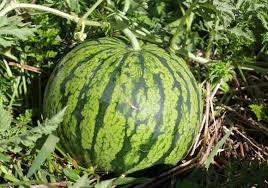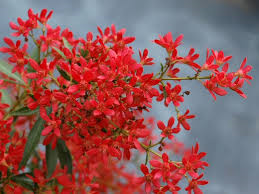REAL WORLD GARDENER
Wed. 5pm 2RRR 88.5fm Sydney, streaming live at www.2rrr.org.au and Across
Australia on the Community Radio Network. www.realworldgardener.com
REALWORLD GARDENER NOW ON FACEBOOKThe complete CRN edition of RWG is available on https://www.cpod.org.au/ , just click on 2RRR to find this week’s edition. The new theme is sung by Harry Hughes from his album Songs of the Garden. You can hear samples of the album from the website www.songsofthegarden.com
WILDLIFE IN FOCUS
 with ecologist Sue Stevens
with ecologist Sue StevensDo you know the difference between a Magpie, Crow, Raven and Currawong?
Good or bad, this bird will probably visit your garden.
If you like the smaller birds in your garden, it may be timely for you to get to recognise the difference because one of them is considered a nest predator, and is partly responsible for the decline of smaller species in some areas where it lives.
Let’s find out more about this bird.
 |
| photo by Degilbo, flickr |
They’re a pretty smart bird so don’t let them train you into thinking that you need to feed them.
As Sue mentions quite regularly, what we feed birds is largely lacking in nutrients that they really need and in this case, the Currawong includes smaller birds in their diet.
Plus you don’t want a nest of Currawongs in your backyard, because during breeding season, pairs defend the nest-site and surrounding territory where they find food for their young.
But if you don’t have small birds in your garden you might just think the birds were great to have around as they eat carrion, rodents, and insects - keeping the local area clean and tidy.
If you have any questions about your Pied Currawongs or a photo, send it in to realworldgardener@gmail.com or write in to 2RRR P.O. Box 644 Gladesville NSW 1675.
VEGETABLE HEROES
Today’s vegetable or fruit hero is not really a fruit and it's Strawberries or Fragaria x ananasa.Did you know that Fragaria means fragrance in Latin?
Strawberries aren’t actually berries because true berries have seeds inside them.
And as every schoolkid will tell you, strawberries have seeds on the outside, and usually about 200 of them!
So what are strawberries exactly?
Did you know that Strawberries are sometimes called an accessory fruit or false fruit because of the seeds being on the outside?
Here’s a botanical bite.
Fruit usually grows from the ovary of the flower, but in the strawberries case, some or all of the fruit grows on outside of the ovary.
That part of the flower that holds the ovary is called the receptacle.
You might find it hard to imagine, but each little "seed" (achene) on the outside of the strawberry fruit is actually one of the ovaries of the flower, with a seed inside it. Strange isn’t it?
Fragaria vesca or the Alpine strawberry is native throughout the Northern Hemisphere.
Botanists think this was probably the ancestor of the garden strawberry of today.
Would you believe that there’s archaeological evidence suggesting that people ate strawberries as far back as during the Stone Age?
The first people to grow strawberries as a crop were the Persians in ancient Persia.
The Persian-called their strawberry plants - Toot Farangi.
By the 18th century Fragaria x ananassa had replaced the alpine strawberry because of the larger berry or fruit.
When to grow?
It’s probably not the right time of year to grow plant out strawberries in many districts, but if you see them for sale as potted strawberries, because you surely will, you can plant them out in January.
For all sub-tropical, temperate and arid zones you can plant strawberries now, but you’ll get advice that May and June are the best planting times.
For cool mountain districts, October and November are your best planting times.
They’re frost sensitive but a 10cm layer of mulch will be enough to protect the plants.
So what are the strawberry plants’ requirements?
Strawberries are short-lived herbaceous perennials, meaning plants can produce for 2-3 years.
Did you know that commercially strawberries are grown for only one season and replanted each year to keep up the yield levels?
The pattern for most strawberries is flowering in spring, set fruit in late spring/early summer, send runners out in summer and become dormant in winter.
At this time of year you will be able to get the ever bearing varieties which give you a second crop in autumn.
If you planted your strawberry plants, in last autumn and winter, they should’ve flowered already and you’ll be telling me that you’ve been enjoying strawberries with cream already.
But why not plant some more plants for Autumn strawberries?
What do Strawberry plants really love?
Not sure what they like? Well…Strawberries love at least 6 hours of sun a day and will grow in most soils but strawberries prefer a sandy loam that is deep and contains a lot of organic matter.
 |
| Strawberries in planter pot. photo M Cannon |
IMPORTANT: When planting a strawberry plant, make sure that about a third of the crown is above the soil. If you plant too deep or shallow the plant might die.
Strawberries have 70% of their roots located in the top 8cm of soil.
By mulching the soil, it helps to keep the roots from drying out and will prevent the plant from drowning in boggy soil.
This means that if growing your strawberries in the garden, you need to grow them on mounds to improve drainage and you will also need to put down a thick layer of mulch such as hay, pea straw or sugar cane to prevent the berries from touching the soil and rotting.
Mulch as you should now, also prevents the soil from drying out too much.
The idea behind strawberry pots is good in principle but in practise I find it needs careful attention because the plants dry out too much.
 |
| Idea for Strawberry planting at Venlo. photo M Cannon |
And you know strawberry pots have several holes in them to cater for about5-6 plants.
TIP: Attaching your pots to a dripper system and putting a saucer under the strawberry pot will save your strawberry crop this year.
Also make sure you water the plants, especially when the young plants are establishing, and during dry spells.
Strawberries prefer a moist environment.
Avoiding overhead watering will reduce fungal disease; drip irrigation or a 'leaky pipe' is best.
TIP:Make sure your berries are fully red before picking them because they don't get any riper off the vine.
Cut the stem above the berry with scissors.
Over summer, strawberry plants send out runners. These modified shoots can be used to propagate new plants but if you don't need new plants, cut these runners off.
After fruiting has finished, tidy up the bushes by giving them a hard prune down to 10cm.
Stick 'em in the fridge soon after picking the strawberries and don't wash the strawberries until just before you want to eat them.
Strawberries don't last, and the extra water on them causes their cells to break down more quickly.
TIP: Wash the berries and pat them dry before removing the stems. That way you avoid excess water entering the berries from the stem end.
Use the berries within three or four days.
To really feed a family you need about 20-30 plants to provide plenty of fruit, but even a couple of plants can be fun to grow.
Which Strawberries to plant now?
For Ever- bearing varieties, the autumn crop is the biggest and you can choose from Tempation which doesn't send out runners so it's great for hanging baskets and Sweetheart is very sweet to taste – an everlasting variety also have their fruit set in autumn .
Why are they good for you?
Growing your own strawberries is much healthier because strawberries are ranked third out of 50 popular fruits and vegetables that retain pesticide residues.
Strawberries are low fat, low calorie; high in vitamin C, fibre, folic acid, and potassium
From only half a punnet of strawberries you'll get more than 100% of your daily needs of Vitamin C, and 5.5g fibre in if you eat the whole punnet of strawberries that's about 20% of your daily fibre needs.
Did you know that eating strawberries, which are rich in nitrate, can increase the flow of blood & oxygen to the muscles by 7%?
This prevents muscle fatigue, making exercise easier.
Strawberries are also low in kilojoules, meaning you can eat 2 cups as one of your daily fruit serves!
DESIGN ELEMENTS
with landscape designer Christopher Owen
Ever wondered what a concept garden is?
What it isn’t, is a garden theme or style because they’re clearly defined.
 |
Chinese Garden-pavilion, lake and willow, Sydney. photo Louise Brooks
|
Garden style is formal, informal, contemporary, modernist, gardenesque and so on.
Let’s find out about concept gardens.
Next time to see garden makeovers or show gardens you’ll know not to copy them judiciously because it does involve a bit of smoke and mirrors to make it look spectacular.
 |
| Chelsea Flower Show display garden 2013, photo M Cannon |

PLANT OF THE WEEK
After mosses and algae, the first land plants on earth were ferns.
Did you know that fern fossils of a group of now extinct ferns called Glossopteris can be found in various parts of Australia still today and these will be in the order of 200 million years old.
What’s that got to do with plant of the week?
Nothing really other than it’s a fern and the foliage looks like a cross between a tree fern and a cycad.
Let’s find out about this plant.
Blechnum
ferns grow in conditions that if you already grow ferns you would go ah yes-
humid, cool but not cold, and filtered light as you would find under evergreen
trees.
Given the
right conditions indoors or out, blechnum ferns can be lovely ferns that will
round out your fern collection.
Blechnum ferns...”Silver
lady”
 |
| Blechnum Silver Lady, photo M Cannon |
Silver Lady is a
form of Blechnum gibbum, and is a dwarf tree fern. Silver Lady’s
is a fast grower and great for those shady parts of the garden.
Silver Lady has a
spread of around a metre, you need a size of pot diameter of around 40cm,
planting up from a 15cm-20cm pot size.
Silver
Lady looks good when multi-planted for that tropical feel to the
garden.
In general, Blechnum
ferns do best in moist, free-draining, compost-enriched and slightly acidic
soil in a shady location.
Blechnums
will grow in a wide range of climates from temperate to sub-tropical
locations however Silver Lady needs reasonable ventilation and won’t tolerate
frost. Mulching is recommended.
Keep the soil moist
throughout the year. In winter, this may mean a weekly watering; in the warmer
months, increase the frequency.
Containerised plants
should generally be watered more frequently than in-ground plants. Water when
the top layer of potting mix appears dry.
Try not to
over-water Silver Lady as this may cause root rot.
It’s also best to
use drippers, rather than overhead watering, so the foliage avoids staying wet
for long periods.

















